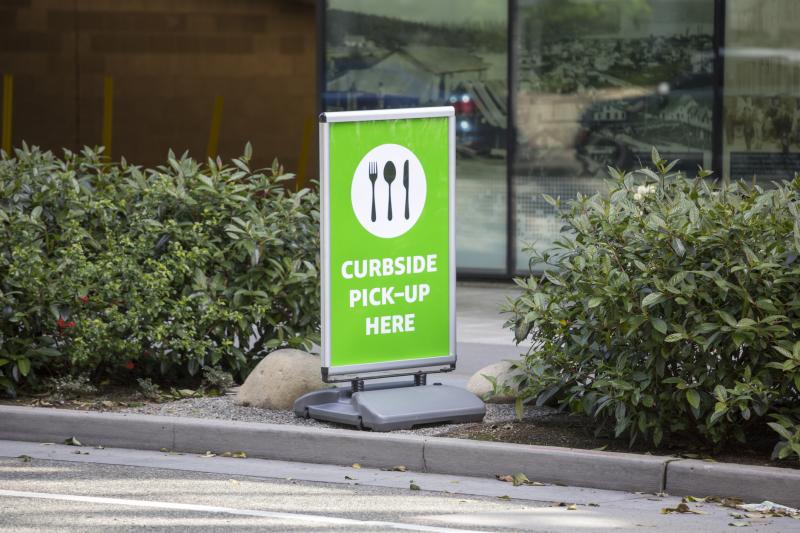Retail's Influentials Peer Into their Crystal Balls for Post-COVID-19 Predictions
As retail finds its footing after being upended by the effects of COVID-19, most in the industry are anticipating lasting changes in the way consumers shop — and thus the way merchants will need to serve them.
In our interviews with the RIS News 2020 Influentials — the execs, analysts and solution providers shaping the retail tech landscape — we asked them to share their predictions on these changes, as well as the tech they think retailers will be most interested in investing in.
And since retailers are regular people too (they’re just like us!), we also asked them to share the tech that’s helping them navigate remote working, store closures and all that extra stress.
What is the one thing you think will change in the retail industry and what tech will retailers look to invest in now in light of the current struggles with COVID-19?
Jim Barnes, CEO, enVista: With the exception of grocery, pet and health/beauty categories, the vast majority of retailers are currently struggling with distressed inventory sitting idle in their networks. I cannot evangelize this point enough: Retailers that lack an omnichannel OMS are going to struggle. Retailers that have the agility to leverage enterprise inventory online and enable omnichannel fulfillment to meet customer demand are going to fare much better.
Long-term, there will be fewer brick-and-mortar stores in the U.S., and they will look different. Stores will increasingly feature mobile, self-checkout options. And we will see more retailers leverage stores as showrooms with less physical inventory and leverage more stores for micro-fulfilment with ship-from-store and same-day delivery.
Greg Buzek, founder and president, IHL Group: The trends and changes that were accelerating already (Haves and Have Nots in retail and technology) just got rocket fuel. It’s easy to focus on cloud solutions, contactless payments, cleaning technologies, queuing technologies and customer safety. Those will be short-term growth areas. But the real success long-term will come from retailers that fix their out-of-stock and overstock issues.
Further, the next biggest area will be the proper handling and optimization of customer journeys such as click and collect, BOPIS, local delivery. Retailers are offering these but losing 5-8 points of margin due to not being optimized.
Next, optimization of returns, and then, finally, the challenges related to human capital and workforce management in light of conflicting stimulus plans that pay laid off employees more to not work than to work. It is quite feasible 70% or more of front-line store level personnel will turnover this year. So all things from recruitment, onboarding, training, retention and release will be critical.
David Ciancio, Global head of Grocery Retail, Dunnhumby: COVID-19 has forced the industry into “rehab” on many levels, but none more important than for the drug of promotions, which creates unhealthy behaviors from both brands and retailers, from the back margin to the selling margin.
Retailers will look to invest in technologies and platforms that better allow themselves and their supplier partners to collaboratively nominate, execute, and measure promotional activity in more transparent and customer-first ways. It may be a difficult rehab!
Valery Ciarimboli, vice president of e-commerce operations, Giant Eagle: For the supermarket industry, I believe that e-commerce penetration at 10-12% will continue. These were levels that were not expected to be achieved for 5-plus years, and we saw it jump in a matter of weeks. Now that customers were introduced to it, and if we have earned their trust, they will continue to shop that way for the convenience.
Jay Dennis, executive vice president, Nielsen Connect: The recent COVID-19 pandemic has certainly been a reminder that life is precious and that we can all take small steps to avoid the spread of disease, but also that much more can be done to identify, treat and prevent communicable illnesses — and that is what we are trying to do, in a small way, with the Claire Elizabeth Dennis Memorial Fund.
Steve Dennis, president & founder, SageBerry Consulting: Most segments of retail will be experiencing contraction overall for the foreseeable future and an acceleration of digitally-enabled shopping. Technology that effectively facilities what I call "harmonized" shopping will be at a premium.
John Hazen, chief digital officer, Boot Barn: I think we are going to see retailers valued like retailers again, not like tech companies. That new toothbrush, shoe or mattress company may be pretty cool, but those multibillion valuations will require a lot more squinting and maybe some rose colored glasses.
Frankly, I think the valuations will drop dramatically. And those disruptors who come next are going to have a focus on profitability and not growth at a loss. Growth at a loss can make sense in tech because of the network effects, those network effects are much less in retail.
Bottom line. The playing field will be more level.
Sylvain Perrier, president and CEO, Mercatus Technologies Inc.: If the coronavirus outbreak has taught us anything about the grocery industry, it’s that the grocery supply chain is a vital instrument in keeping the population sustained, and grocery e-commerce has become a critical element of that. It’s very possible that, because of the COVID-19 pandemic, we’ve now reached the percentage of the population projected to use online commerce by 2025.
Online grocery is here to stay and more people will recognize that convenience now and continue to embrace it. If a brand didn't have e-commerce with fulfillment options up and running now, they have likely lost some customers to another brand.
Jonas Stillman, director of retail operations – systems, copy & print, and coworking, Office Depot: I think we will see some form of social distancing for the foreseeable future. We are testing a social distancing tech solution from Indyme Solutions out of San Diego. Indyme has adapted their Smartdome device, which is typically used by retailers as a theft deterrent, to monitor when people are within 6’ of each other and then automatically play a social distancing message. Other retailers will undoubtedly need to invest in solutions that enable a safe work environment while at the same time safeguard the customer experience.
Carrie Tharp, VP, retail & consumer, Google Cloud: The time horizon that retailers think about delivering on their “digital transformation” will rapidly shrink. COVID-19 has exposed weaknesses in omnichannel capabilities, business continuity plans, and supply chain responsiveness. The shift to digital has been well under way for years, but has a new focus in a “store-less” reality.
Which piece of tech has helped your business deal with the coronavirus crisis the most?
Buzek: Video conferencing, without question. We were already a virtual organization already, so the changes in working location was inconsequential for us because we communicated this way already. But the ability to quickly launch webinars for large audiences with Q&A to provide economic updates when the data is changing so fast has been critical for us to stay in constant communication with our clients and gauge their feedback as well.
Barnes: As a global software solutions and consulting firm, many of our associates are used to working remotely and from a home environment. We use Microsoft Teams to collaborate and communicate, and that has served us well as we quickly transitioned the remainder of our workforce to work from home. We also use Zoom video, and I have to say this has provided a meaningful opportunity to get to know our associates and business partners in a different, close-up light — seeing them in their home environments, working alongside their families and pets, talking face-to-face.
While these are hard times, the entire global population is encountering many of the same joys and challenges. Video meetings have made us all feel more connected in a different and intimate way, which is really important right now. Our associates have also made every effort to bring joy and fun into the equation by planning meeting themes, showing up with fun video backgrounds and planning virtual happy hours and events. We are all in this together, and we are very energized and motivated to be part of the next chapter, helping retailers rapidly accelerate from survival to success and thrive.
Ciarimboli: Teleconferencing! It enabled our leadership team and the entire company to communicate remotely from home and keep the business running. Also, having our own online grocery pickup and delivery business helped us offer a contactless shopping experience to guests that needed it. We are not relying on third parties like Instacart to fulfill orders and have direct control over the guest experience, which differentiates us.
Dennis: The apps I use to listen to guided meditations that help remind me to accept the things I cannot change.
Hazen: This will seem like a bit of a funny answer, but SMS. We have been using SMS to communicate with our internal team daily with a quick COVID update, and people truly love it. And then Slack, I couldn’t have a conversation about work from home without giving Slack the credit it is due, an absolutely amazing product.
Stillman: Curbside pickup has by far been the biggest game changer for us. Office Depot has had a pretty extensive buy-online-pickup-in-store program for last 10 years, which has steadily grown every year, but with the addition of curbside pickup to the platform has been an absolute game changer for our BOPIS program. We are seeing high demand for BOPIS as a whole on historical terms, and many BOPIS customers are choosing Curbside Pickup as their fulfillment method of choice.
The addition of curbside pickup has also resulted in the highest NPS scores for our BOPIS program and, most importantly, helped us to continue to deliver a great customer experience.






609d.jpg)
